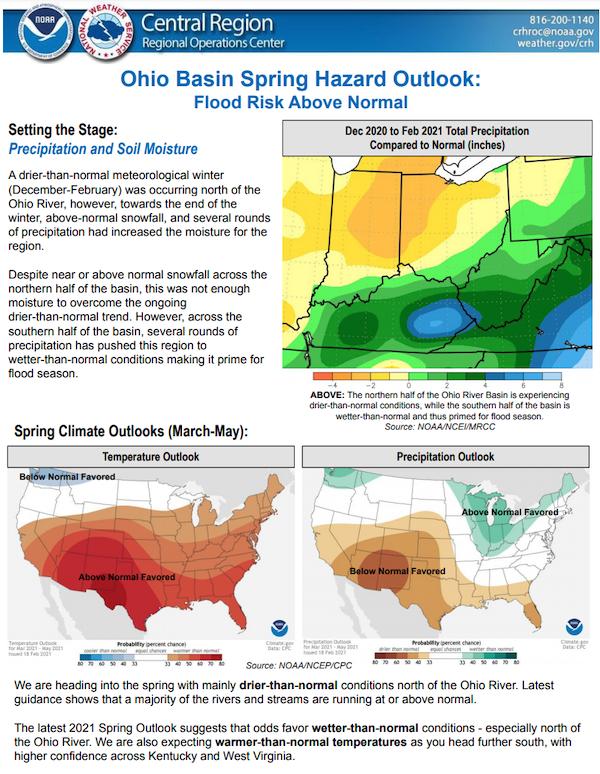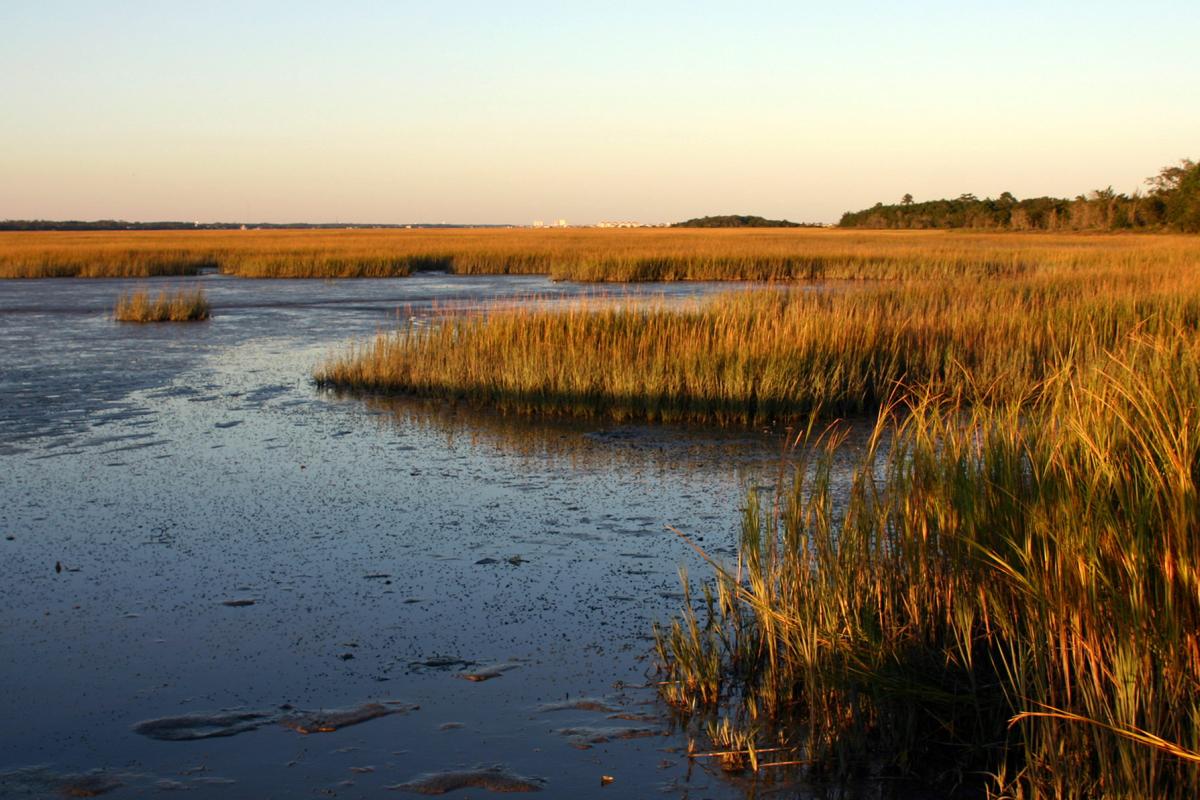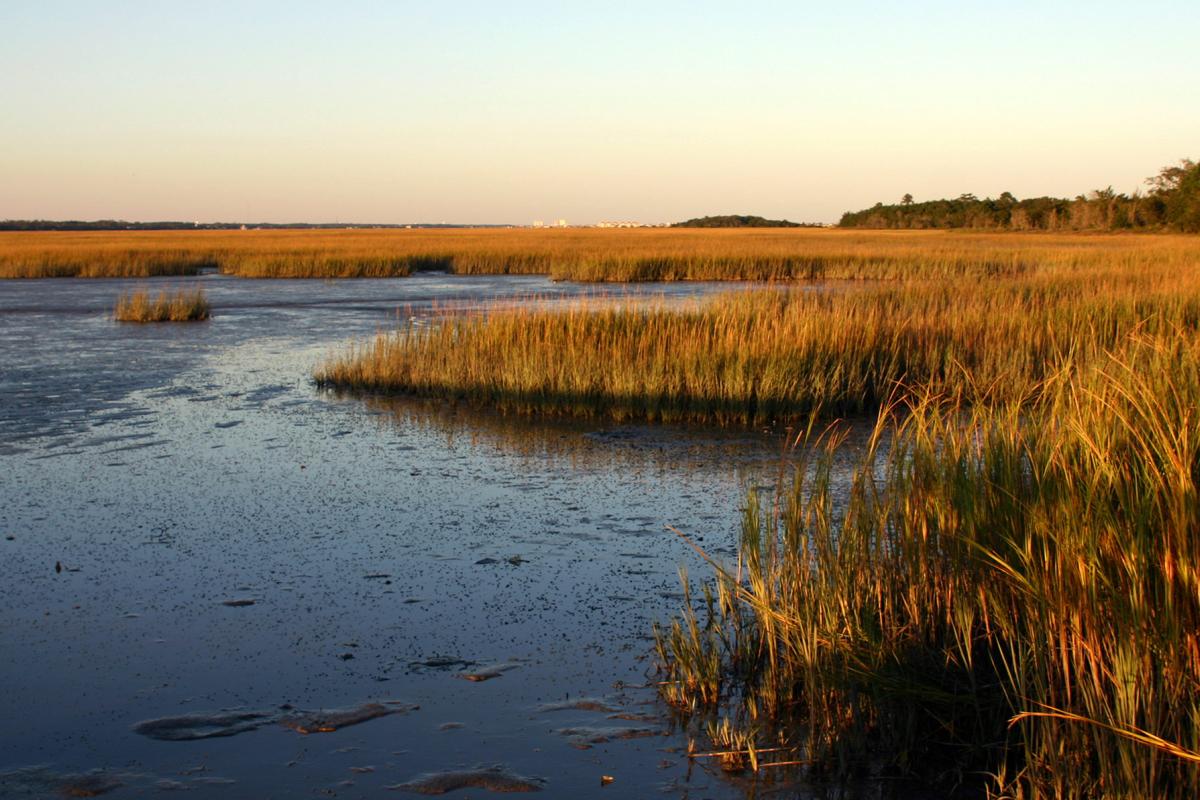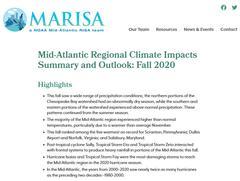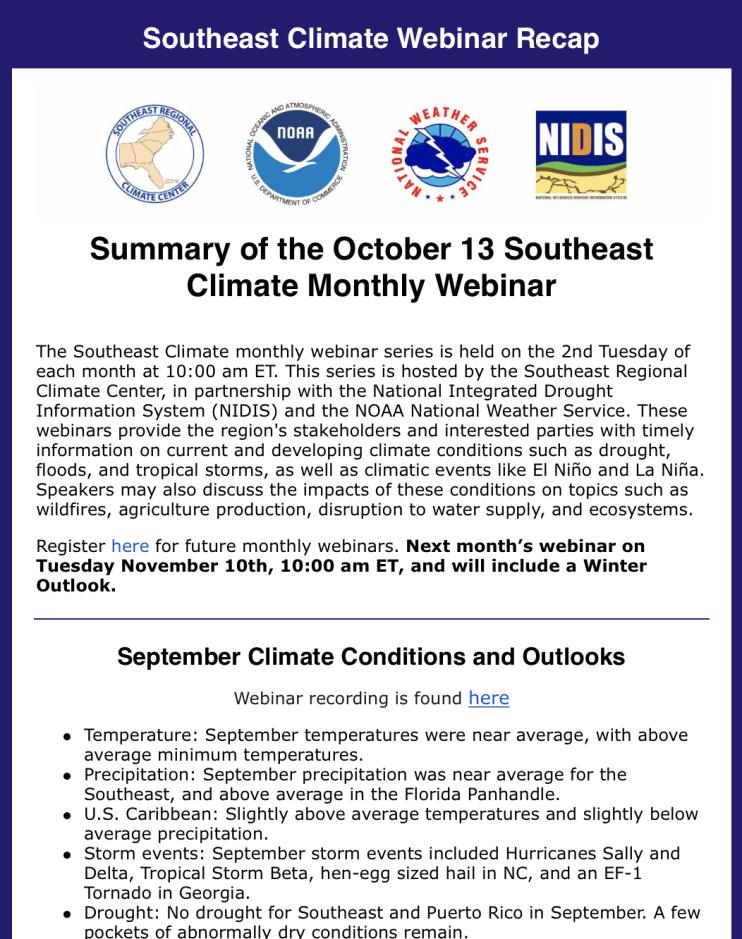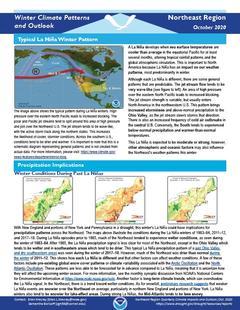For the latest forecasts and critical weather information, visit weather.gov.
The National Weather Service developed 2021 Spring Hazard Outlooks in coordination with the National Centers for Environmental Information, National Integrated Drought Information System (NIDIS), U.S. Department of Agriculture, National Weather Service River Forecast Centers, and National Interagency Fire Centers' Geographic Area Coordination Centers. This outlook highlights the various Spring hazards that could occur and potential impacts across the Ohio River Valley.
Quarterly Climate Impacts and Outlook for the Chesapeake Bay Region for September – November 2020. Dated December 2020.
https://www.midatlanticrisa.org/climate-summaries/2020/12.html
Quarterly Climate Impacts and Outlook for the Southeast Region for September – November 2020. Dated December 2020.
Well-above-average temperatures were observed across the Southeast, driven primarily by excessively warm daily minimum temperatures. Precipitation was above average across much of the region. Several long-term stations observed their wettest autumn on record.
This climate conditions and outlook update was originally sent via email to the Southeast DEWS email list.
Provides a definition of La Nina; a look back at previous La Nina winters; other factors; and the outlook for winter temperatures and precipitation.
NOAA’s Regional Climate Services Program created these Outlooks to inform the public about climate impacts within their respective regions. Each regional report contains easy-to-understand language, and anyone can access them through the Drought Portal.
Fact Sheet Updated November 2021


